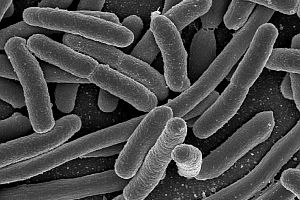Auto Injury Q&A. Answers to Questions Every Accident Victim Should be Asking
 Being involved in a car accident is a traumatic and potentially life-altering experience. However, dealing with auto accident injuries afterward can often be even more difficult. Many people who have experienced an auto accident have questions about what the future holds. Here are answers to a few commonly-asked auto injury questions.
Being involved in a car accident is a traumatic and potentially life-altering experience. However, dealing with auto accident injuries afterward can often be even more difficult. Many people who have experienced an auto accident have questions about what the future holds. Here are answers to a few commonly-asked auto injury questions.
What Should I do Immediately After a Car Accident?
If you are in an auto accident, your first priority should be to care for your health and for the health and safety of the people around you. Check to see if you or any of your passengers have sustained any injuries that clearly require immediate medical attention. If so, call an ambulance right away. If you are able, move your car to the shoulder of the road so that it does not impede traffic or endanger others. Then, call the police to file an accident report. Right now is not the time to worry about who caused the accident. Instead, focus on getting the help you need and avoiding any further injuries.
What Are the Most Common Types of Car Accident Injuries?
Injuries from car accidents most commonly stem from rapid acceleration, deceleration and impacts—either from your body slamming into a part of your vehicle or from being hit by an unsecured piece of cargo. If your head is impacted by another object, you could suffer a traumatic brain injury. Facial injuries due to impact with steering wheels, dashboards, and airbags are also common. Finally, the sudden motion caused by a rear impact can cause neck injuries, including the infamous “whiplash.”
Should I See a Doctor Even if I feel Fine?
Yes, absolutely! In many cases, the injuries sustained during a car accident are not immediately apparent. Musculoskeletal injuries to the neck, back, hips and shoulders might not show any symptoms until days, weeks or even months after the initial trauma. Therefore, it is important to seek a medical evaluation immediately after your accident even if you do not feel seriously hurt at that moment.
Who is Responsible for Paying My Medical Bills?
The short answer is “It depends.” In a perfect world, your insurance company would cover your medical bills without any hassle. However, it is very important to understand your policy and to follow the process your company has in place for documenting and submitting claims so that you can receive the proper care and be sure that it will be paid for. In some situations—for instance, when your motor vehicle accident occurs while you’re driving for an employer or when your accident results in legal action—others may ultimately be responsible for paying for your medical care. No matter what the situation is, it’s critical that your healthcare providers know how to work effectively with insurance companies and attorneys to help insulate you from the financial and administrative consequences of auto accidents so that you can focus on your recovery.
What Happens if I Don’t Seek Medical Care?
If you walk away from a car accident and choose not to seek medical care, you are gambling with your health. You might be just fine, but then again you might also suffer from serious, lasting injuries. The simple truth is that your recovery will be faster and more complete if problems are diagnosed and treated early. We know this both from research and from long experience. Your health is too important to leave up to chance, so we’ll say it again: please seek medical attention after an accident, even if you feel you don’t need to.
If you are suffering from chronic neck or back pain due to an auto accident (even one that happened some time ago), there are ways to help relieve your symptoms and restore your function. Call or visit our office to learn more. We’re here to help!








